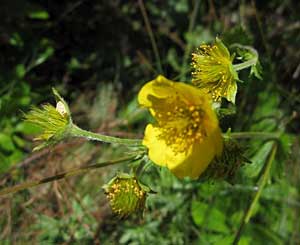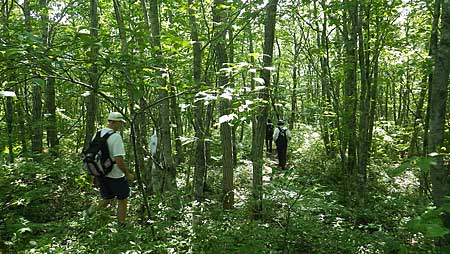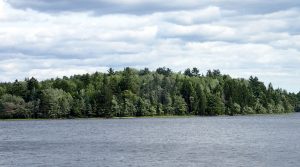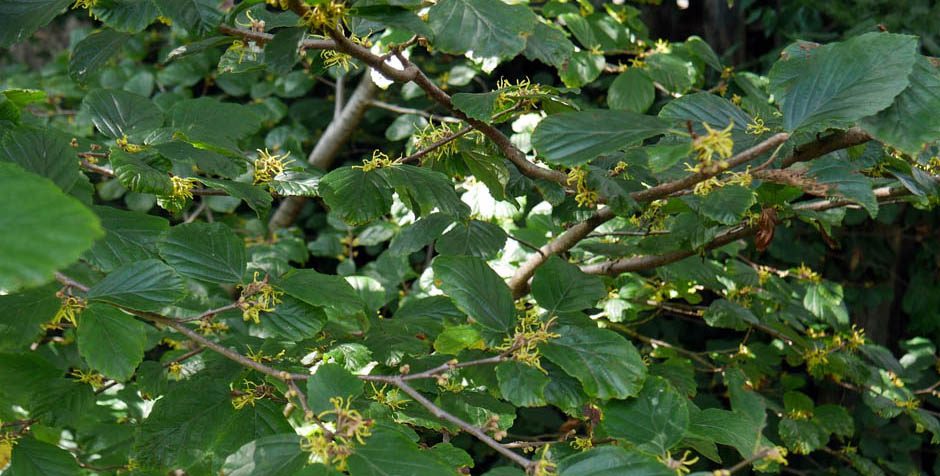22017
 Concern for Eastern Mountain Avens leads to bog restoration on Brier Island
Concern for Eastern Mountain Avens leads to bog restoration on Brier Island
Jan 12, 2017: “The Eastern Mountain Avens is an arctic-alpine plant that survives in just two places in the world. One of them is Big Meadow Bog where Nick Hill is involved in an $800-thousand study and restoration funded by Environment Canada.”
Saturday, March 18, 2017:
Skunk cabbage
Skunk cabbage, located only in SW Nova Scotia, is our earliest flowering native plant. We plan to leave Halifax by 07:00hrs. and arrive Digby by 10:30-11:00. I have asked Jeffrey White to lead us to the van Tassel Lake site. We may also visit other sites time permitting. Meet at the Irving Big Stop ( exit 26 from 101) at the above time). Please call me (Charles Cron) or email me (902-477-8272 after 6 p.m.; ccron72@hotmail.com) by Friday Mar 17 to register,car pool etc. I will need a contact number for you in case of cancellation or other problems . Cell phone numbers if you have one can help with communication along the way.
Monday, March 27, 2017:
Nature’s Symbiotic Symphony – It Took So Long
Presentation by Norris Whiston
All welcome.
NS Museum of Natural History, Summer Street, Halifax 7:30 p.m.
(Enter by Parking Lot entrance.)
 Celebrating the Symphony |
Earth came with all the essential elements needed to foster life, but – it has taken a very long time and many biological transformations to make those elements into useable elements to foster the Earth’s current wealth of biodiversity. This presentation will cover a portion of the changes to Earth’s atmosphere, soils, and waters that have allowed our present life forms to exist. The presentation will also give some of the various roles many flora and fauna play in ecosystems and the effects of current human activities on those ecosystems.
Norris Whiston has a BSc in Civil Engineering from University of Rhode Island and Masters in Education from Acadia. Norris is now a retired public school educator and writer of books and materials on nature, environment, history, and genealogy, He also helped develop, build and interpret 35 kilometers of hiking trails in Earltown.
More events to be posted shortly
Monday, February 27, 2017:
The Forested Wetlands Project
Presentation by Logan Gray and Sydney Bliss
All welcome.
NS Museum of Natural History, Summer Street, Halifax 7:30 p.m.
(Enter by Parking Lot entrance.)
 Forested wetlands are an important part of the broad coastal landscape of the Atlantic provinces. Although these habitats are likely to be as sensitive to disturbance as other wetlands, they have been overlooked and understudied. Because of the presence of trees and their more complex vegetation structure, forested wetlands are likely very diverse and and have distinctive aspects to their ecosystem functioning. However, they may also be threatened from harvesting and other development as they often resemble non-wetland forests. They may also be more sensitive to changes in precipitation due to climate change because soil moiture levels may be closer to the threshold required for maintaining wetlands. Different types of forested wetlands (e.g., spruce peat bogs, alder swamps) may differ in their role in carbon storage and sensitivity to biodiversity loss and climate change.
Forested wetlands are an important part of the broad coastal landscape of the Atlantic provinces. Although these habitats are likely to be as sensitive to disturbance as other wetlands, they have been overlooked and understudied. Because of the presence of trees and their more complex vegetation structure, forested wetlands are likely very diverse and and have distinctive aspects to their ecosystem functioning. However, they may also be threatened from harvesting and other development as they often resemble non-wetland forests. They may also be more sensitive to changes in precipitation due to climate change because soil moiture levels may be closer to the threshold required for maintaining wetlands. Different types of forested wetlands (e.g., spruce peat bogs, alder swamps) may differ in their role in carbon storage and sensitivity to biodiversity loss and climate change.
The Forested Wetland Project, funded under the Atlantic Ecosystems Initiative, was initiated in 2016 under the direction of Karen Harper and Cindy Staicer (Dalhousie), Gavin Kernaghan (MSVU) and Yolanda Wiersma (Memorial). Its objectives are to characterize biodiversity of different types of wetlands (structural, plant, bird, lichen, fungal diversity); relate different aspects of biodiversity in forested wetlands to assess their vulnerability to biodiversity loss; and to determine the role of forested wetlands in the carbon cycle by monitoring tree decomposition.
The Nova Scotia Wild Flora Society is one of the NGO partners in the project who are asked to provide input on locations of forested wetlands, identify interesting features and challenges and assist in the dissemination and discussion of results. It is early on in the project and this presentation will help to engage NSWFS members and others in the project. Logan Gray is the Project Manager for the Nova Scotia team, Sydeny’s focus is on birds.
Sydney Bliss is a wildlife biologist by training with a focus on avian ecology. She received her BSc from Mount Allison in 2015 (Morphometrics and distribution of Semipalmated Sandpipers in the upper Bay of Fundy). She has provided technical support to studies of Atlantic Sturgeon in NB, Bicknell’s Thrush in NS, and forestry in BC. She’s also worked as an interpretive naturalist for the NCC. Sydney will be starting her MSc at Dalhousie in 2017 with Cindy Staicer studying the fine-scale habitat associations of three landbird species at risk in NS:Olive-sided Flycatcher, Rusty Blackbird, and Canada Warbler.
Logan Gray’s training is mostly in microbial and molecular biology. He received a BSc from Acadia in 2012 (A survey of potential bacterial zoonotic pathogens in shrew feces). He completed a MSc at Saint Mary’s under Gavin Kernaghan (Changes in root associated fungal communities during fine root decomposition in Red Spruce and Balsam Fir). Logan conducted some preliminary vegetation surveys for the Forested Wetlands in the summer of 2016 and is currently the Project Manager for the NS team. Logan instructs introductory biology labs at SMU and is on the executive (Secretary/Events coordinator) of the Nova Scotia Mycological Society.
Botanical Artists of Nova Scotia Association
SPRING ART EXHIBITION AND SALE
April 3 – April 28, 2017
Nova Scotia Archives
Halifax, Nova Scotia
View Poster
April 24, 2017: AGM & Sean Blaney on new botanical findings
Featured Presentation: Sean Blaney (Atlantic Canada Conservation Data Centre): Review of new botanical findings for N.S.
Meet at NS Museum of Natural History at 7:30 p.m.
Sat April 29, 2017 ( Rain Date Apr 30): Avon Penninsula
Expect to see : leatherwood in bloom, Shepherdia canadensis, Ostrich fern Amphitheatre, beaverdam, and more. Bring camera lunch water binoculars. Wear rubber boots to get through wet areas around beaver dam, (hikers may be ok if waterproof). A little rough through this area.
To get there: Highway 14 to Junction , turn towards Mantua past small General store on left then turn left at intersection onto Avondale road; go past the Miller creek Gypsum mine (closed): to Poplar Grove ,at intersection take Ferry Road ( right turn at triangle intersection) large farm on the right, go along Ferry Road (towards Belmont) to a cleared area with the Miller Creek mine on the right and a parking area and old logging road on the left. (only road that crosses Ferry Road). Park at the logging road entrance. We will walk from there. 3-4 km to Hepatica site.
When: We will meet at the Ferry Rd. Parking site at 09:00hrs. Estimate 4-6hrs for the hike and time to search and take photos.
Register: Anyone interested please call me , Charles Cron at 902 477 8272 by 7:00 pm Friday evening Apr 28. Best to call in the evening between 8:00pm and 11:00 pm before Friday. I will need your name and phone number so I may contact you in case of cancellation or change related to weather and unforseen events. You may also contact me by email before Friday Apr 29. I may not see your email Friday night. ccron72@hotmail.com
Monday Sep 25, 2017
Building a functional mini-meadow without shocking the neighbours (too much)..
Mary Macaulay wants to be pollinator-friendly and will tell us how she is doing it. Mary, a long-time member of NSWFS, is owner and operator of the Social Enterprise Remember Adventures in Tatamagouche. She has been raising awareness about insect decline since 2013 via social media as Queen Bee for the global Insect Recovery Project.
 Saturday Oct 14, 2017.
Saturday Oct 14, 2017.
(Rain date: Sat Oct 21, 2017)
Acadian forest walk.
The area of Sandy Lake/Jack Lake/Marsh Lake in Bedford supports some magnificent sweeps of mixed, multi-aged Acadian forest. David Patriquin will lead a walk to view several Old Growth stands. The basic walk will take about 2 – 2.5 hours, not difficult but slow-going in a few spots. There is a limit of 30 participants. To register, send an e-mail to nswildflora@yahoo.ca; please put SANDY LAKE FOREST WALK in the subject line. NSWFS members will be given priority until Friday October 6th, then non-members will be accepted as space allows, but non-members can send in a request to participate earlier. Information on where to meet will be forwarded once registration is confirmed.
Monday Oct 23, 2017
Looking for stuff. Terrestrial Ecology for Fun and Profit
Mike Crowell will talk about what is involved in being a consulting terrestrial ecologist. The talk will focus on the various roles that a terrestrial field ecologist plays during their career using Mike as an example. The life of a consulting ecologist can be fun and challenging. On one hand, you get to see a lot of scenery and some really neat things. On the other hand your life can be chaotic and everybody wants their reports yesterday. All things considered, it is a rewarding career. Mike is a plant ecologist by training and a wildlife ecologist by avocation. He has worked as a consultant for the past 34 years . He graduated from Dalhousie University with a MSc. Degree in 1988 where he studied with Bill Freedman.
Monday Nov 27, 2017
Seagrasses & Seaweeds of the southern Caribbean
David Patriquin spent the last several winters re-surveying seagrass beds at Barbados and Carricou that he first surveyed in 1969 in relation to his PhD research on nutrient cycling in seagrass beds. He was joined by his Dal colleague Bob Scheibling who had conducted surveys of seagrass beds in Carriacou as part of his PhD research on the sea star Oreaster reticulatus in 1974. David will introduce us to the soft-bodied and calcareous seaweeds that are significant components of the seagrass beds, as well as to describe some of the changes he has seen.




